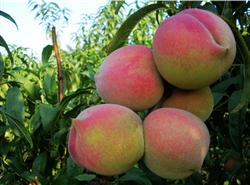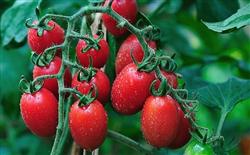Cherry tomato planting: how to manage each stage of growing small tomatoes?

How to manage each stage of growing small tomatoes? Please describe in detail the various stages of planting small tomato can refer to the following methods for management: soak the seeds in clean water for 4-6 hours, disinfect the seeds with 800x chlorothalonil for 10-15 minutes (constantly stirring), then rinse with clean water, pack them in a sandcloth bag, wrap it with a wet towel, and then put it in a 25-30 ℃ environment to avoid light and accelerate germination. Or after washing with clean water, mix with fine sand and sow directly to raise seedlings. 1. Seedling raising: the seedling age is generally about 45 days, the suitable daily temperature for seedling growth is 20-28 ℃, the night temperature is 10-15 ℃, and the air relative humidity is 60-70%. When the light is insufficient, make up the light with incandescent lamp or biological effect and other measures. The humidity management of early spring cultivation is based on the principle of watering early and not watering late, dry and wet. 7-10 days before planting, seedlings were gradually refined by controlling water and cooling, so as to reduce the occurrence of dwarf plants. The 1000-seed weight of small tomato seeds is 1.4-1.8 grams. Good seedlings have a decisive effect on early yield, because the flower bud differentiation of the first to third inflorescences has begun during the seedling breeding period, and its development will be affected if the seedlings suffer from disease or malnutrition. At present, the focus of seedling breeding is to control tomato leaf roll virus. Insect control nets or yellow boards are used during the seedling stage to isolate and eliminate the invasion of aphids and whitefly, so as to stop the transmission of the virus. The seedlings grow to four leaves and two days before transplanting. Leaf fertilizer (leaf green essence) should be used and the seedling age should be about four to six leaves. 2. Planting: the planting density of small tomato is different according to its planting period, planting area and pruning method. Two crops a year: autumn stubble sowed from late June to mid-July (seedling age is about 30 days). Sowing seeds from late October to mid-November in spring stubble (the seedling age is about 45 days, and the seedling raising time will be prolonged when the temperature is low). One crop a year: sow seeds from mid-August to early September (seedling age is about 30 days). Row spacing 30cm-35cm × (double row) 140cm-160cm. 3. Pruning mode: varieties with unlimited growth: double-stem pruning is often the main method, and other lateral buds are all removed. After the lower fruit is ripe and harvested, when the main vine is near the ceiling, the old and diseased leaves should be removed and the vine should fall in time, so as not to affect the plant growth and reduce the yield. 4. Water and fertilizer management Tomato is a crop with deep roots in Solanaceae crops, the root system can be as deep as 120-150CM, while the roots of eggplant and sweet pepper only reach about 120CM. The ideal soil is sandy soil with deep soil layer and good drainage. Continuous cropping of tomato, rice, beans and corn, especially the land with tomato bacterial wilt and strong acidity needs special attention. Soil disinfection should be fully carried out in the protected area to prevent serious diseases. Soil preparation requires deep ploughing of 20-30CM, fine crushing of the soil, and addition of 50-100kg lime according to soil pH. In areas prone to boron deficiency, a certain amount of boron sand should be applied appropriately, and the application amount should not exceed 1.5kg per mu. The long-term cultivation of fruits and vegetables needs a large amount of organic fertilizer, including 10000-15000 kg / mu of base fertilizer, 30-40 kg / mu of compound fertilizer and 15-25 kg / mu of phosphorus and potassium fertilizer. before fertilization, a deep ditch was dug in the middle of the border surface, and then evenly applied into the ditch, and then leveled the border surface. Or spread evenly, and then combine with deep turning. The use of topdressing is very important, and the accumulation of dry matter is very slow within one month after tomato planting, so the first topdressing is generally applied 20-30 days after planting, mainly compound fertilizer, combined with irrigation, irrigation the day before fertilization, in order to facilitate the dissolution and absorption of fertilizer after fertilization, and the application amount can be small, and the subsequent topdressing is quantitative and applied every three weeks. However, in some areas, the fruit is harvested once, watered once and fertilized once. Tomato is very sensitive to boron deficiency and calcium deficiency. Boron is a trace element, and excessive use will cause toxic effect. at present, it is suggested that about 1 kg of borax per mu should be spread as base fertilizer. The absorption of calcium fertilizer is affected by roots and other nutrient elements, such as excessive nitrogen fertilizer will often cause calcium-deficient fruit top rot. If tomato plants are immersed in water for more than 24 hours, root injury will also affect the absorption of calcium fertilizer. If calcium deficiency or boron deficiency is found in the fruit during cultivation, it can be supplemented by foliar fertilization, using 0.5% calcium chloride or borax aqueous solution. 5. Rainproof cultivation: the main limiting factor of small fruit tomato production in summer can be said to be rain damage, sudden rainfall will make the fruit crack and lose its commercial value. Therefore, a simple net room should be used as the production mode of summer small fruit tomato. The main advantage of net room cultivation is that the fruit can be harvested and put on the market after full red ripening, and the sugar content of the fruit is naturally 1-2 degrees higher than that of open field cultivation, as it is easy to produce high temperature barriers in summer, after tomato plants enter the flowering stage, the screens on both sides of the net room can be rolled up to increase ventilation, while some farmers use sunshade nets to reduce the light during the noon period (10:00 to 3 p.m.) in order to achieve the purpose of cooling. If you encounter continuous rainy days, the relative humidity in the facility can reach more than 90%, which can easily lead to leaf mold and navel rot. Therefore, calcium fertilizer is sprayed on the leaf surface to reduce the incidence of navel rot. Pay strict attention to disease prevention. 6. Fruit setting treatment: the fruit setting rate of tomato decreased significantly when the night temperature was more than 21 ℃, and the heat tolerance of small tomato was higher, but in summer, the night temperature was more than 24 ℃, and the daily temperature was higher than 32 ℃. In winter and spring, when the night temperature was lower than 8 ℃, the fruit setting rate decreased. Therefore, in these periods that are not conducive to fruit-setting, some drugs should be used, such as tomato fruit-setting spirit, to promote fruit-setting. Attention should be paid to the temperature during the application period. The higher the temperature, the lower the concentration. During the application period, when 2-3 florets were in full bloom, the inflorescence was sprayed once to avoid spraying to the terminal bud, resulting in terminal bud atrophy and narrowing of leaves, and the disease was similar to that of cucumber virus infection. If the concentration is too high, it is easy to cause hollow fruit. At this time, plant auxin can be used to spray the leaves with 5-10ppm. 7. Pest control: the main diseases of small fruit tomato in spring and summer are seedling blight, bacterial corner spot and bacterial wilt. In recent years, tomato virus disease has become an important disease due to the harm of whitefly and aphids. You can use the yellow board to trap and kill. The symptoms and control methods of various diseases and insect pests are introduced below. Click to get more cherry tomato planting techniques click to get more fruit planting techniques
- Prev

How to fertilize peach trees to get high yield?
How to fertilize peach trees to get high yield? Please give guidance on planting peach trees with reference to the following methods of fertilization: 1. Fat before budding. It is generally applied in the first 15 days of the Beginning of Spring, which can not only make up for the lack of fertilization or non-fertilization after fruit, but also supplement the lack of nutrients in peach trees in time. Generally speaking, each peach tree is treated with 0.5k urea.
- Next

Cherry tomato cultivation: what is a virgin fruit? How do you plant it?
What is a virgin fruit? How do you plant it? Please introduce the virgin fruit, also known as grape tomato and cherry tomato. Except for all the nutrients of tomato, its vitamin content is 1.7 times higher than that of ordinary tomato. The nutritional value of virgin fruit is better than that of common tomato. Virgin fruit contains glutathione and lycopene.
Related
- Moge, come on! The staff of the peasant association in the producing area of cantaloupe were frightened when the crowd gathered.
- Causes and Solutions of low Fruit setting rate of Apple
- Symptoms and control measures of passion fruit virus disease
- Fruit growing lesson: how do apple orchards keep high yields?
- Can you build orchards in the mountains? What are the pros and cons?
- How to manage the coloring period of Crisson grape?
- This paper introduces the processing technology of two kinds of fig products.
- How much is a month for retired teachers in rural areas by 2020?
- How can strawberry planting increase sugar content? We should pay attention to management in many aspects.
- What are the cultivation techniques on how to improve the yield of golden fruit?

